
PhysCOS and COR Strategic Technology Portfolio
For more information about these technologies visit our Technology Database.
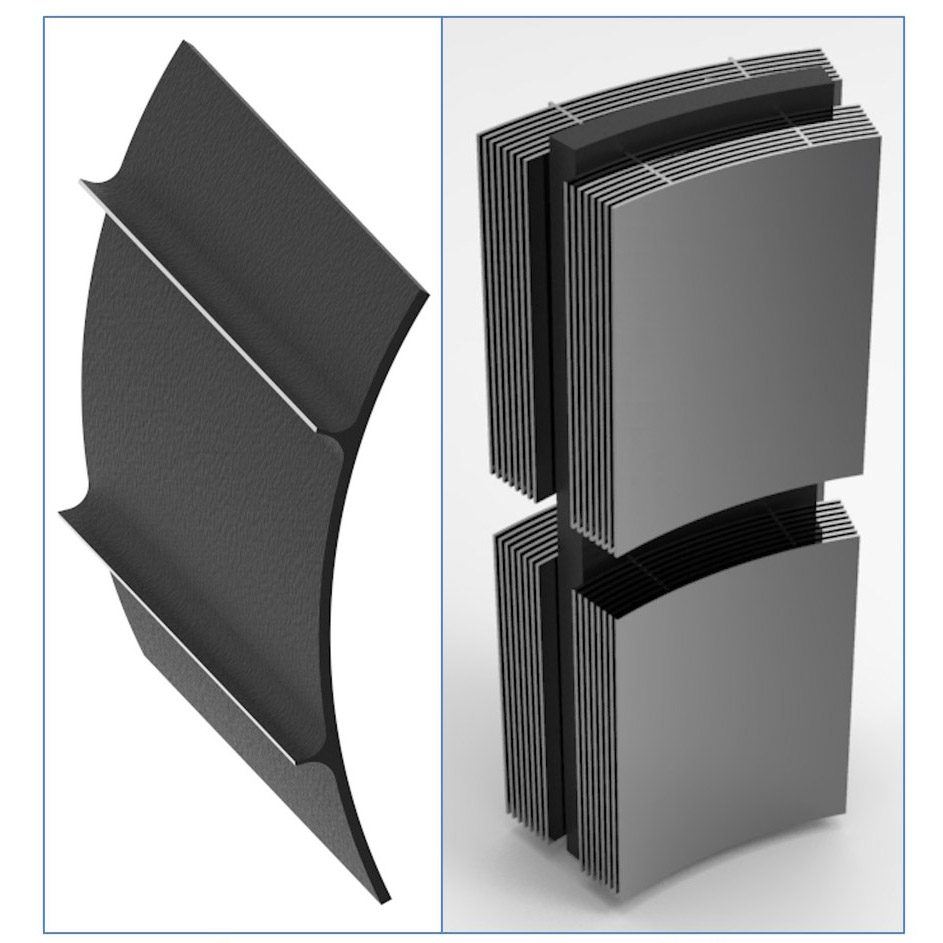
Single X-ray mirror segment with mounting ridges plus stacked segments with support panel
Significance:World-class thin grazing-angle X-ray mirror technology; baselined for Lynx X-ray flagship mission concept
Project Title: Next Generation X-ray Optics: High Resolution, Light Weight, and Low Cost
PI: Zhang, William (GSFC)

Scanning Electron Microscope (SEM) images of cleaved freestanding Critical-Angle Transmission (CAT) grating
Significance:Highest-resolution X-ray transmission grating technology; baselined for Lynx X-ray flagship mission concept
Project Title: High Resolution and High Efficiency X-ray Transmission Grating Spectrometer
PI: Mark Schattenburg (MIT Kavli Institute for Astrophysics and Space Research)

200-mm wafer patterned with 16 ARCUS-style Critical-Angle Transmission (CAT) gratings
Significance: Enhances manufacturability of highest-resolution X-ray transmission grating technology; baselined for Lynx X-ray flagship mission concept
Project Title: Readying X-ray Gratings and Optics for Space Applications: Manufacturability and Alignment
PI: Randall Smith (SAO)
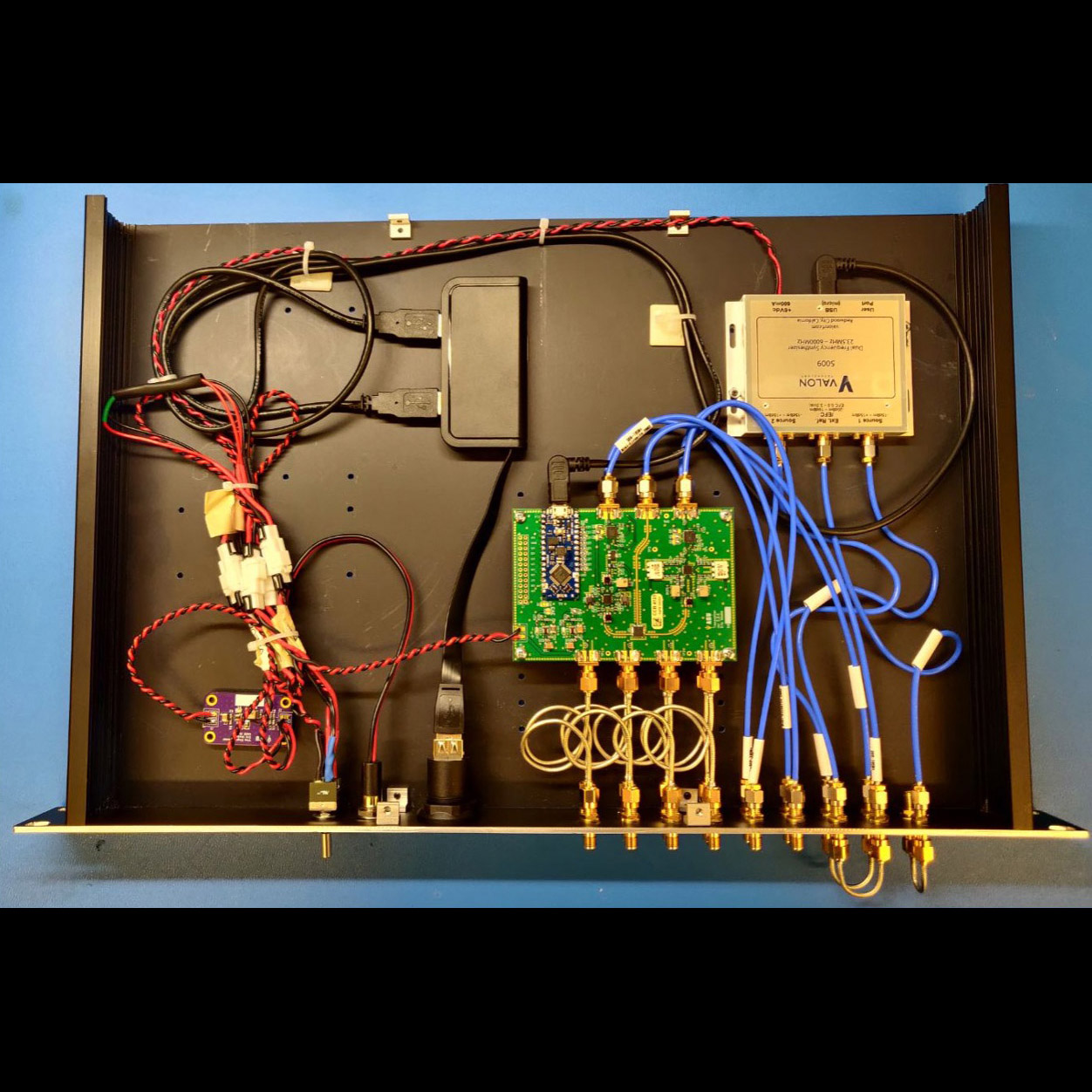
Auxiliary boards for reading out superconducting resonators with resonant frequencies from 0.1 – 8 GHz, implemented for ground-based Toltec experiment
Significance: Fast readouts are crucial for large focal plane arrays in future missions
Project Title: Development of Low-Power FPGA-based Readout Electronics for Superconducting Detector Arrays
PI: Philip Mauskopf (ASU)
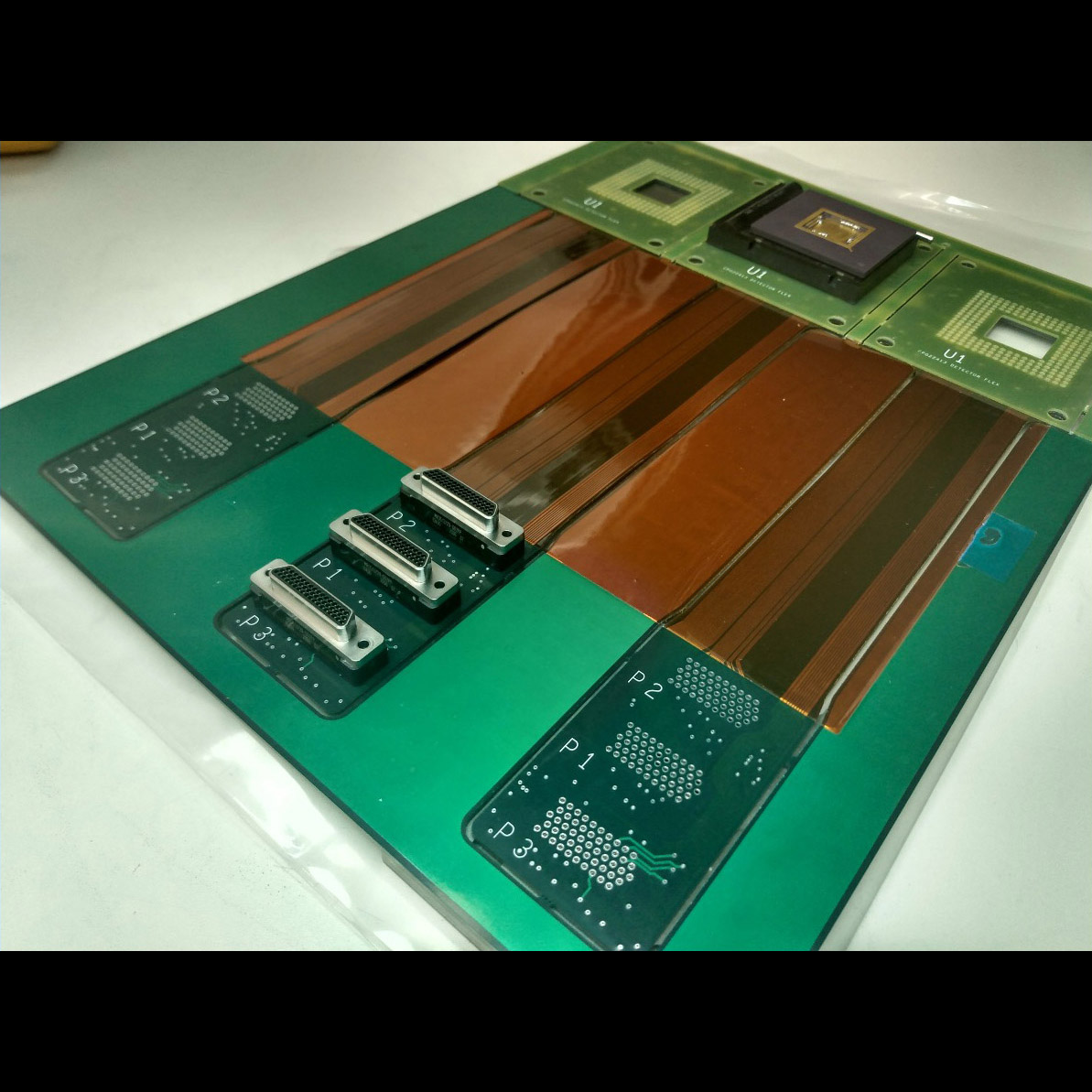
One of three assembled low-noise detector boards in a panel
Significance:Low-noise detectors are crucial for future missions
Project Title: A Single-Photon-Sensing and Photon-Number-Resolving Detector for NASA Missions
PI: Don Figer (RIT)

Field-testing detectors in BICEP ground array (Antarctica)
Significance: CMB polarimetry is crucial for identifying echoes of the Big Bang
Project Title: Superconducting Detectors for Cosmic Microwave Background (CMB) Polarimetry in PICO
PI: Roger O’Brient (JPL/Caltech)
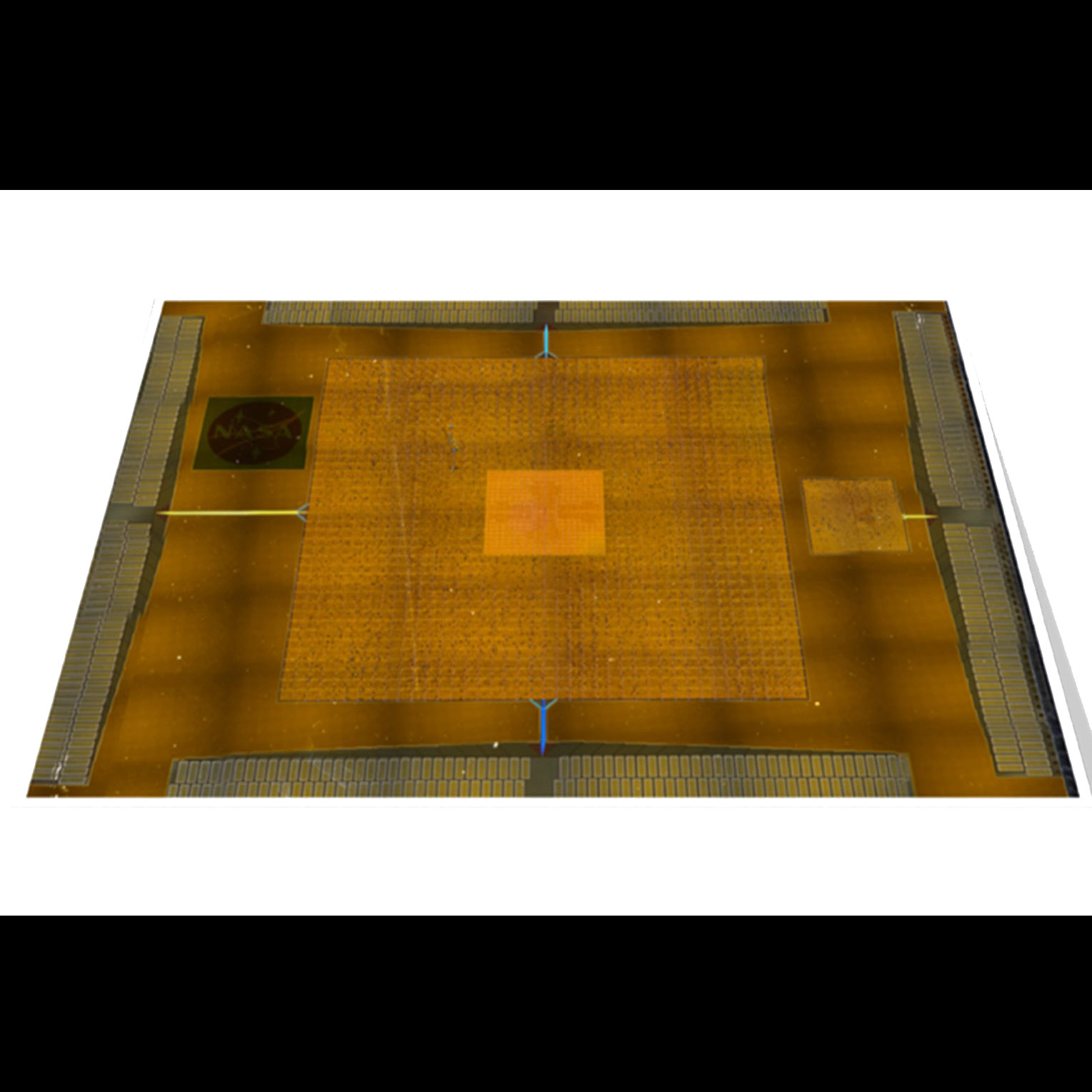
First prototype Lynx Transition-Edge-Sensor (TES) arrays with 25 absorbers
Significance: High-resolution TES microcalorimeters may enable future X-ray missions such as Lynx
Project Title: Advanced X-ray Microcalorimeters: TES Microcalorimeters
PI: Caroline Kilbourne (GSFC)
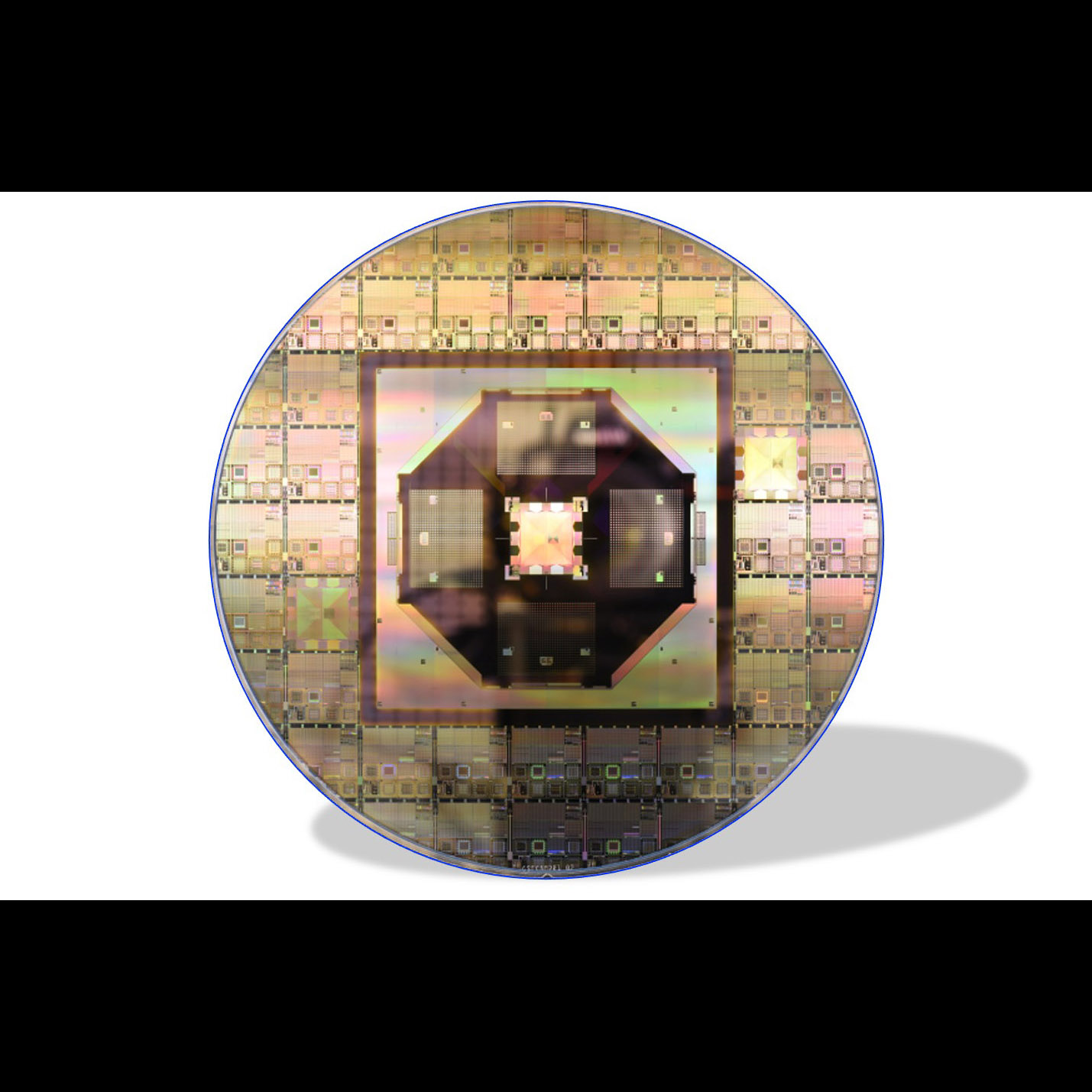
8” wafer with 4” Magnetically-Coupled Microcalorimeter (MMC) X-ray detector core
Significance: MMCs offer energy resolution that may enable future X-ray missions such as the Lynx X-ray flagship mission concept
Project Title: MMC Arrays for X-ray Astrophysics
PI: Simon Bandler (GSFC)

High-resolution metrology to measure polished X-ray optic mandrel
Significance: High-quality X-ray optics may enable or enhance future Astrophysics missions
Project Title: Advanced X-ray Optics: Computer-Controlled Polishing of High-Quality Mandrels
PI: Jacqueline Davis (MSFC)

Active slit for differential deposition used to correct X-ray-optic figure errors
Significance: High-quality X-ray optics may enable or enhance future Astrophysics missions
Project Title: Advanced X-ray Optics: Differential Deposition for Figure Correction in X-Ray Optics
PI: Kiranmayee Kilaru (MSFC)
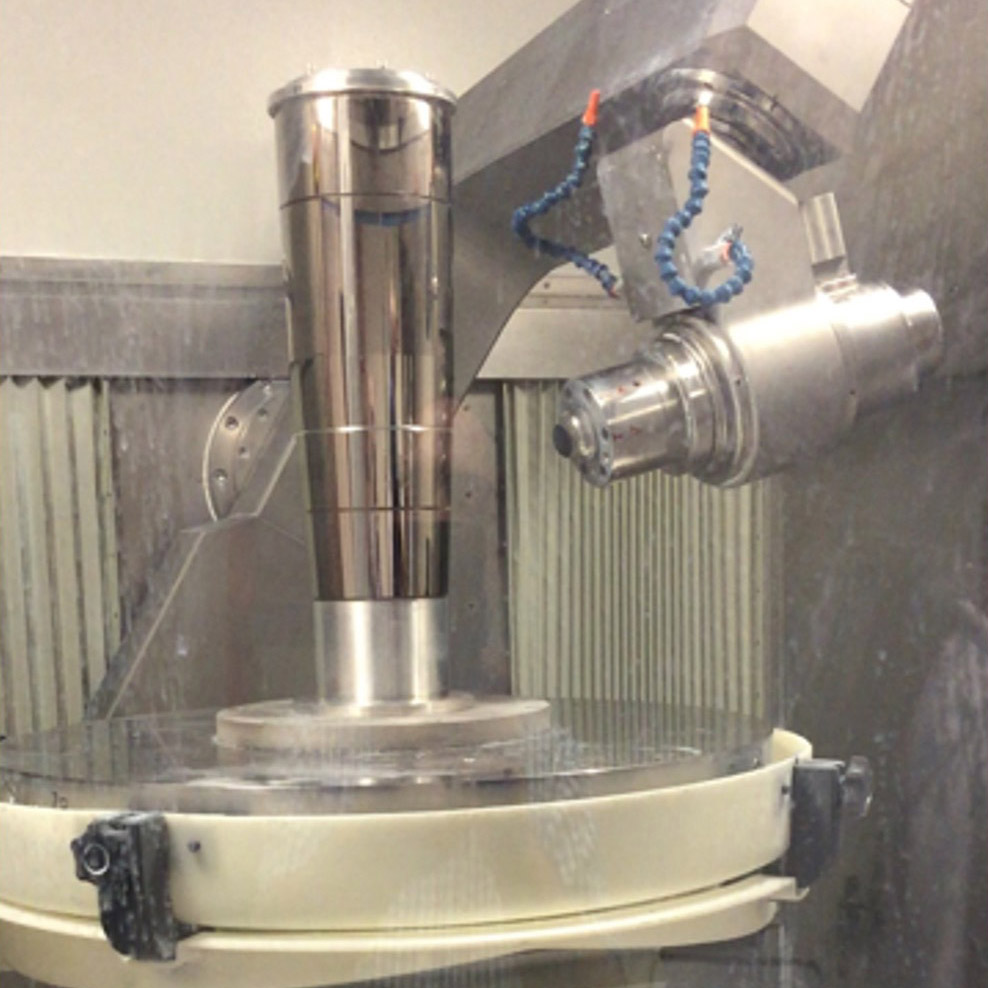
X-ray optic mandrel being polished
Significance: High-quality X-ray optics may enable or enhance future Astrophysics missions
Project Title: Advanced X-ray Optics: Full-Shell Direct Polishing
PI: Stephen Bongiorno (MSFC)

Hi-C primary Extreme-UV (EUV) multilayer mirror
Significance: High-quality EUV and X-ray optics may enable or enhance future Astrophysics
Project Title: Advanced X-ray Optics: Mirror Coatings
PI: David Broadway (MSFC)

Lightweight polyimide aerogel optic
Significance: High-quality X-ray optics may enable or enhance future Astrophysics missions
Project Title: Advanced X-ray Optics: Hybrid X-Ray Optics by Additive Manufacturing
PI: David Broadway (MSFC)
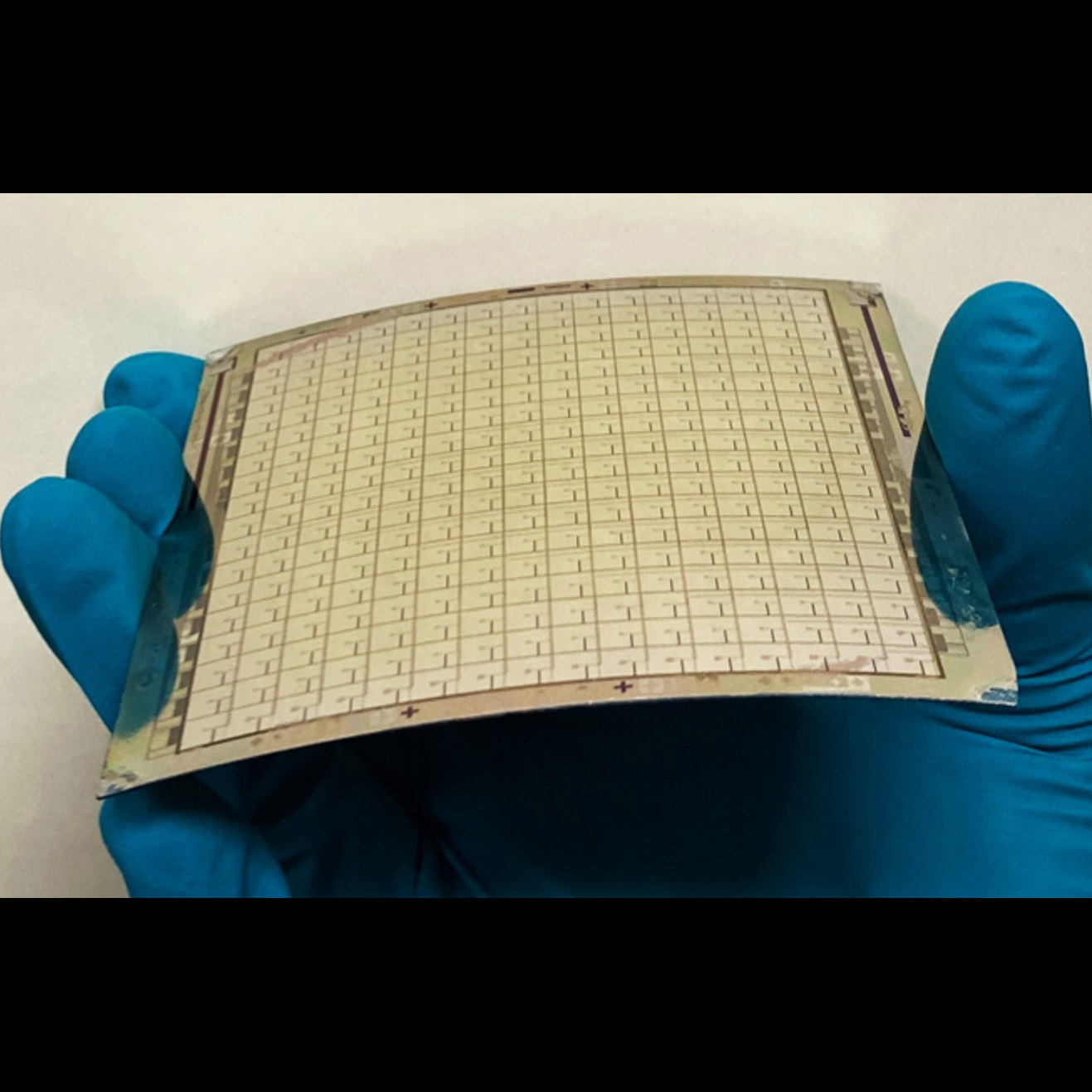
Back side of adjustable X-ray mirror segment with row-column addressing, electro-static-discharge (ESD) protection circuits, and piezo cells
Significance: Adjustable X-ray optics are a backup technology for the Lynx X-ray large mission concept
Project Title: Adjustable X-Ray Optics
PI: Paul Reid (SAO)
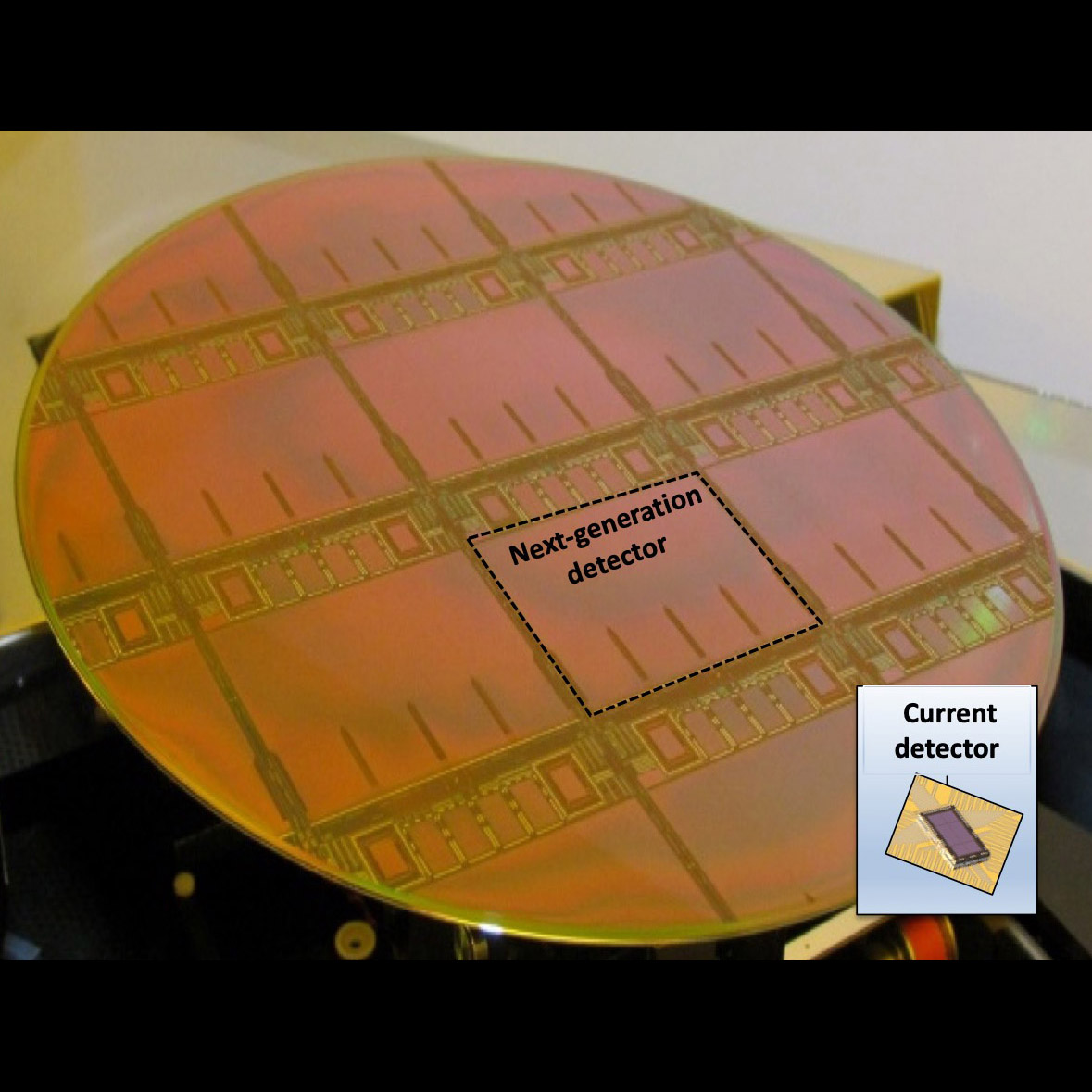
Six next-generation X-ray detectors on 200-mm wafer. Inset shows current, much smaller sensor
Significance: Advanced X-ray detectors may enable the Lynx large mission concept
Project Title: Toward Fast, Low-Noise, Radiation Tolerant X-ray Imaging Arrays for Lynx: Raising Technology Readiness Further
PI: Mark Bautz (MIT Kavli Institute for Astrophysics and Space Research)
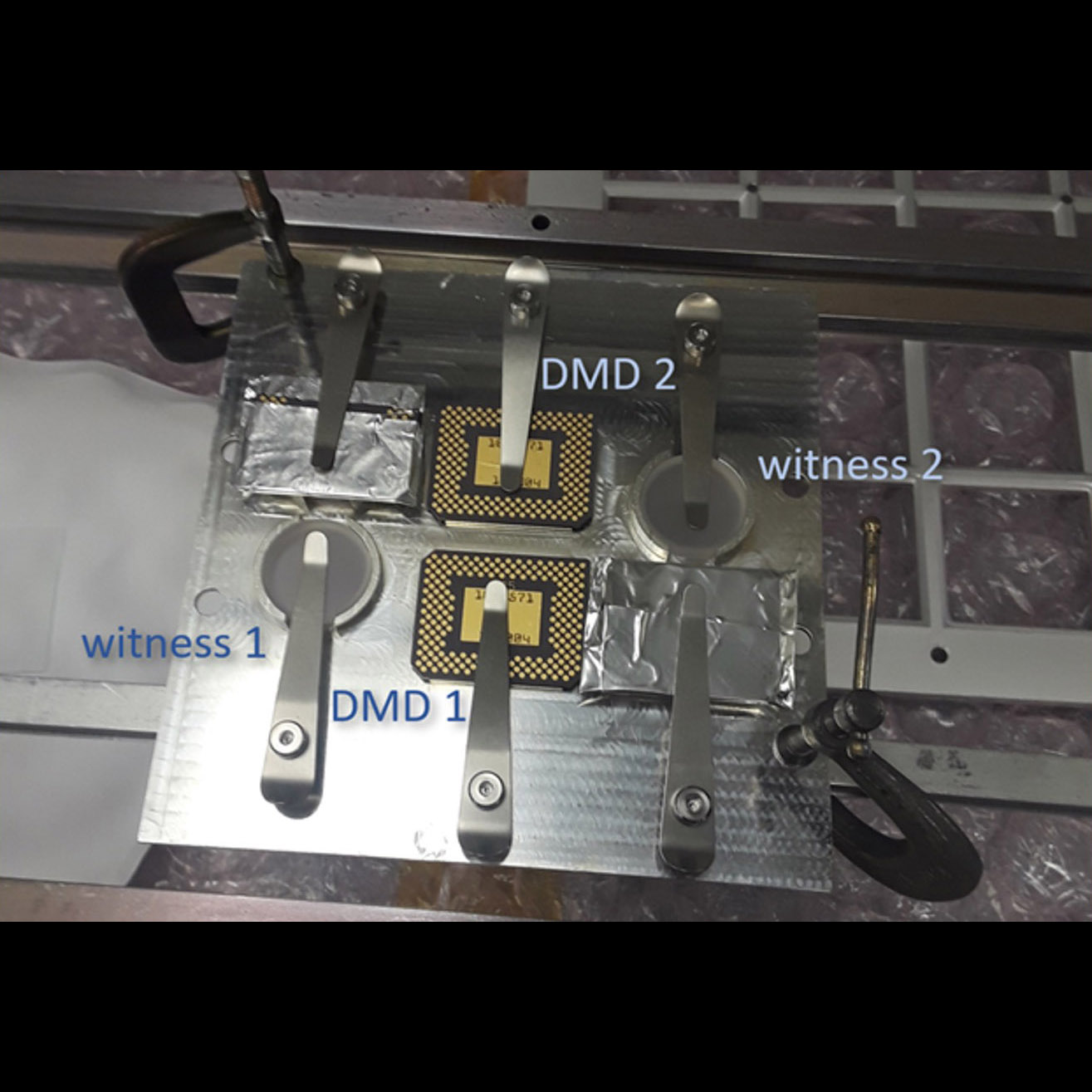
Commercially available Digital Micromirror Devices (DMDs) recoated for improved UV reflectance
Significance: Replacing windows of commercial DMDs may enable far-UV multi-object spectrometry in future missions
Project Title: Development of DMDs for Far-UV Applications
PI:Zoran Ninkov (RIT)

Radio Frequency System-on-Chip (RFSoC) board allowing dense readout of large focal
Significance: High-density readout may enable large focal planes needed for future missions
Project Title: Advancing High-Density Readout Technology for Superconducting Sensor Arrays for Spaceflight
PI: Josef Frisch (SLAC)
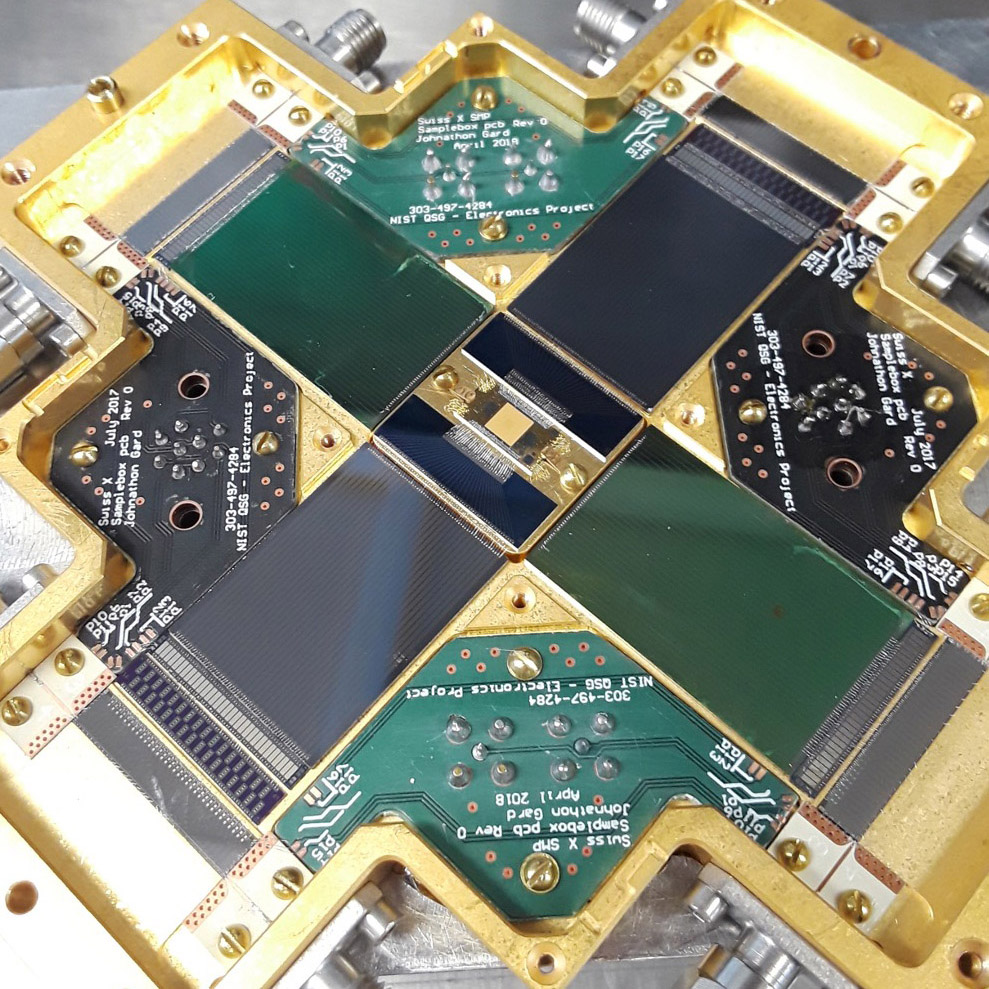
Measuring hydras for Transition-Edge Sensors (TESs) using micro-multiplexing
Significance: High-multiplexing-factor readouts may enable missions such as Lynx
Project Title: Technology development for Microwave Superconducting QUantum Interference Device (SQUID) multiplexing for the Lynx X-ray Observatory
PI: Douglas Bennett (NIST)

Two-stage 10K-to-4-K Continuous Adiabatic Demagnetization Refrigerator (CADR)
Significance: This advanced sub-Kelvin cooling technology has been baselined by Lynx, Origins, PICO, and GEP
Project Title: High-Efficiency Continuous Cooling for Cryogenic Instruments and sub-Kelvin Detectors
PI: James Tuttle (GSFC)

Speckle interferometer for ultra-precise measurements of non-reflective objects
Significance: Ultra-stability and -precision (~10 pm) may enable the HabEx and LUVOIR missions
Project Title: Ultra-Stable Structures
PI: Babak Saif (GSFC)

Advanced far-IR detector array
Significance: Advanced far-IR detectors may enable the Origins large mission concept
Project Title: Development of a Robust, Efficient Process to Produce Scalable, Superconducting Kilopixel Far-IR Detector Arrays
PI: Johannes Staguhn (JHU & GSFC)

Custom 0.9-m Atomic Layer Deposition (ALD) tool, developed to coat ground-based astronomical mirrors for ALD-protected silver
Significance: Advanced coatings may enable future far-UV missions
Project Title: : High-Performance, Stable, and Scalable UV Aluminum Mirror Coatings Using ALD
PI: John Hennessy

Large Area Plasma Processing System (LAPPS) at NRL used for removing oxidation from aluminum optics
Significance: High far-UV reflectance is prevented by oxidation of aluminum mirrors; removing it may enable future far-UV missions
Project Title: E-Beam-Generated Plasma Etching for Developing High-Reflectance Mirrors for Far-Ultraviolet Astronomical Instrument Applications
PI: Manuel Quijada (GSFC)
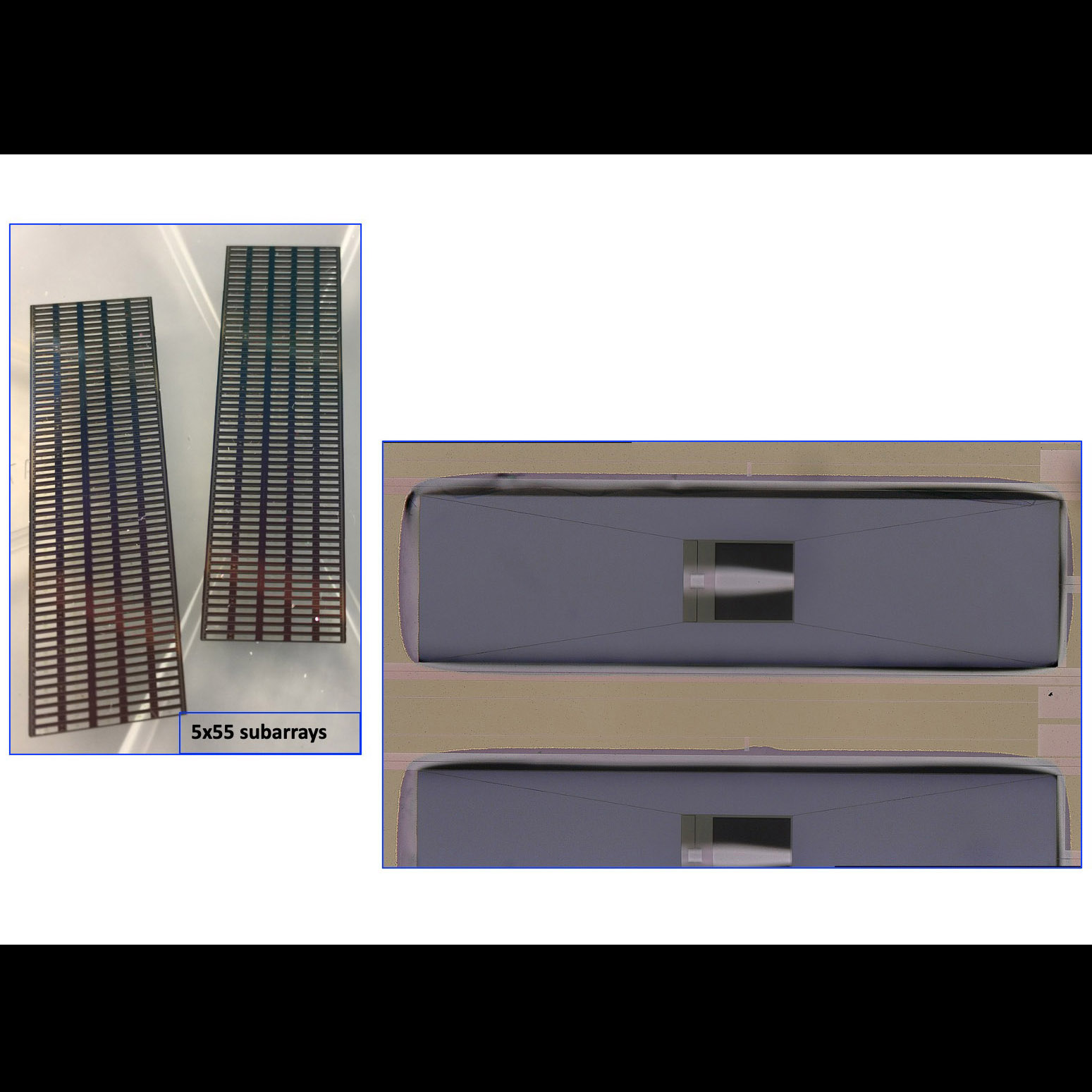
Initial Transition-Edge-Sensor (TES) bolometer fabrication
Significance: Extremely sensitive far-IR detectors may enable future missions
Project Title: Ultra-Sensitive Bolometers for Far-IR Space Spectroscopy at the Background Limit
PI: Matt Bradford (JPL)
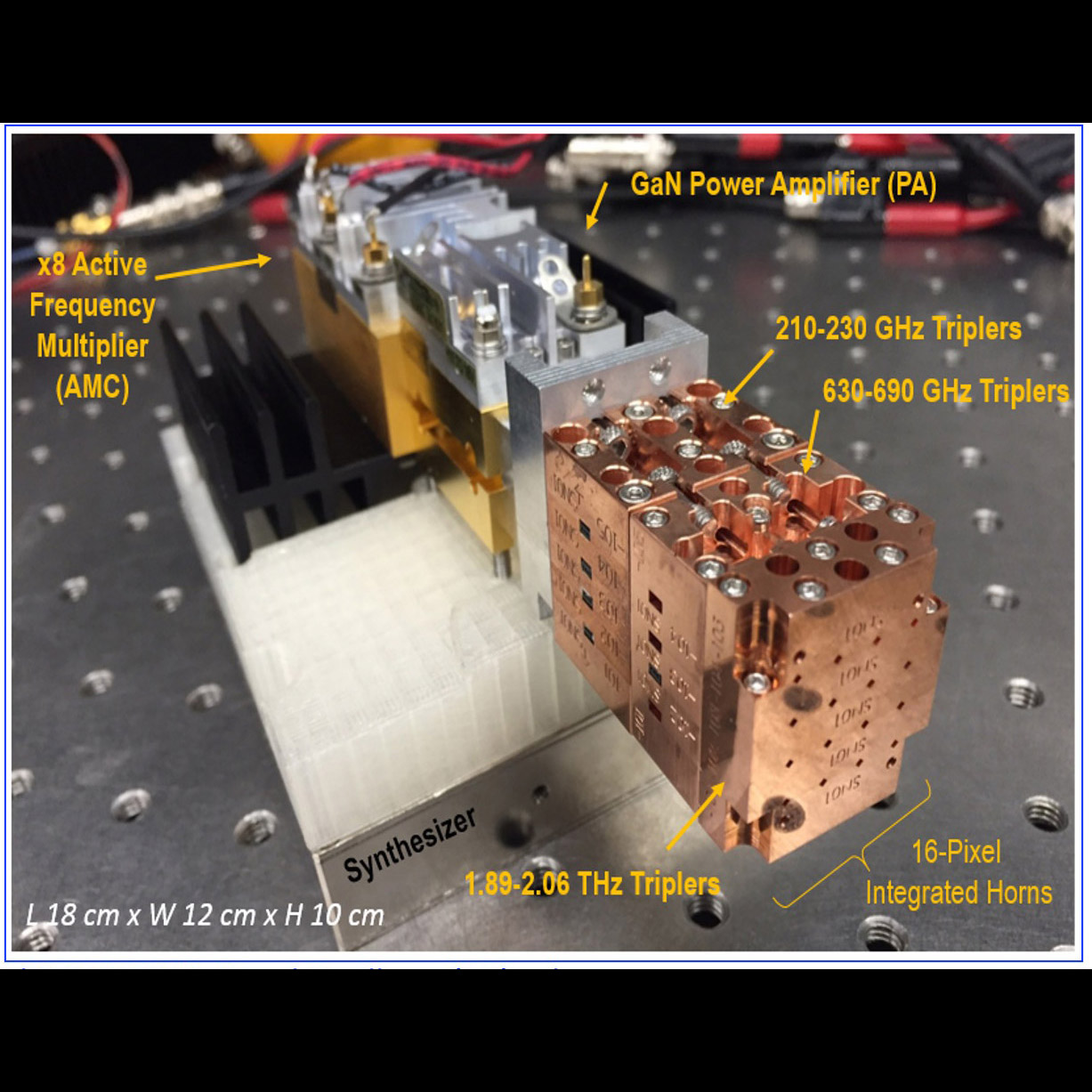
16-Pixel 1.9-2.06 THz Local Oscillator (LO) subsystem
Significance: Further development of this high-resolution far-IR detector technology to higher pixel numbers may enable or enhance future missions
Project Title: Development of High-Resolution Far-IR Arrays
PI: Imran Mehdi (JPL)
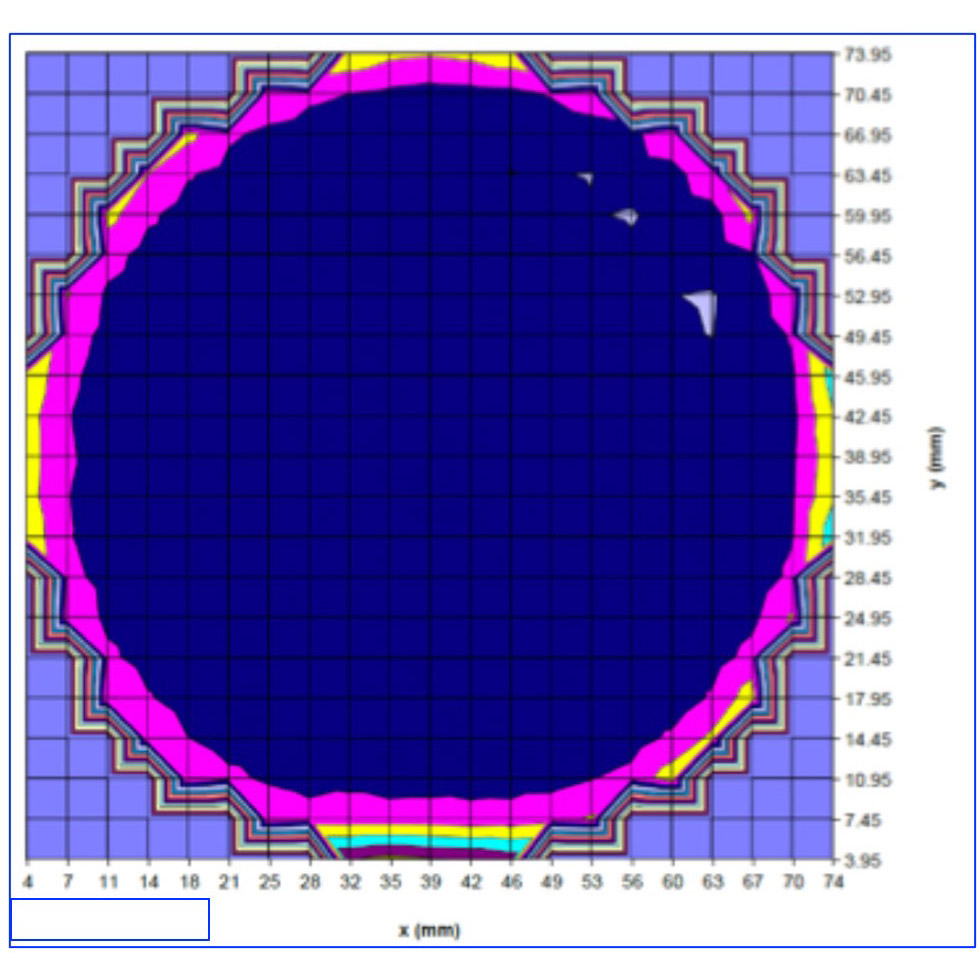
Growth uniformity of wafer yielding six usable sites for 1k×1k-pixel Linear-mode Avalanche Photodiode (LmAPD) detector
Significance: Ultra-low-noise detectors may enable spectroscopy of extrasolar planets
Project Title: Photon counting NIR LmAPD Arrays for Ultra-low Background Space Observatio
PI: Michael Bottom (U. of Hawaii)

1.5-m Advanced Mirror Technology Development- (AMTD) 2 ULE® mirror in active thermal enclosure
Significance: This technology may enable required ultra-stability (~10 pm) for HabEx and LUVOIR missions
Project Title: : Predictive Thermal Control (PTC) Technology to enable Thermally Stable Telescopes
PI: H. Philip Stahl (MSFC)
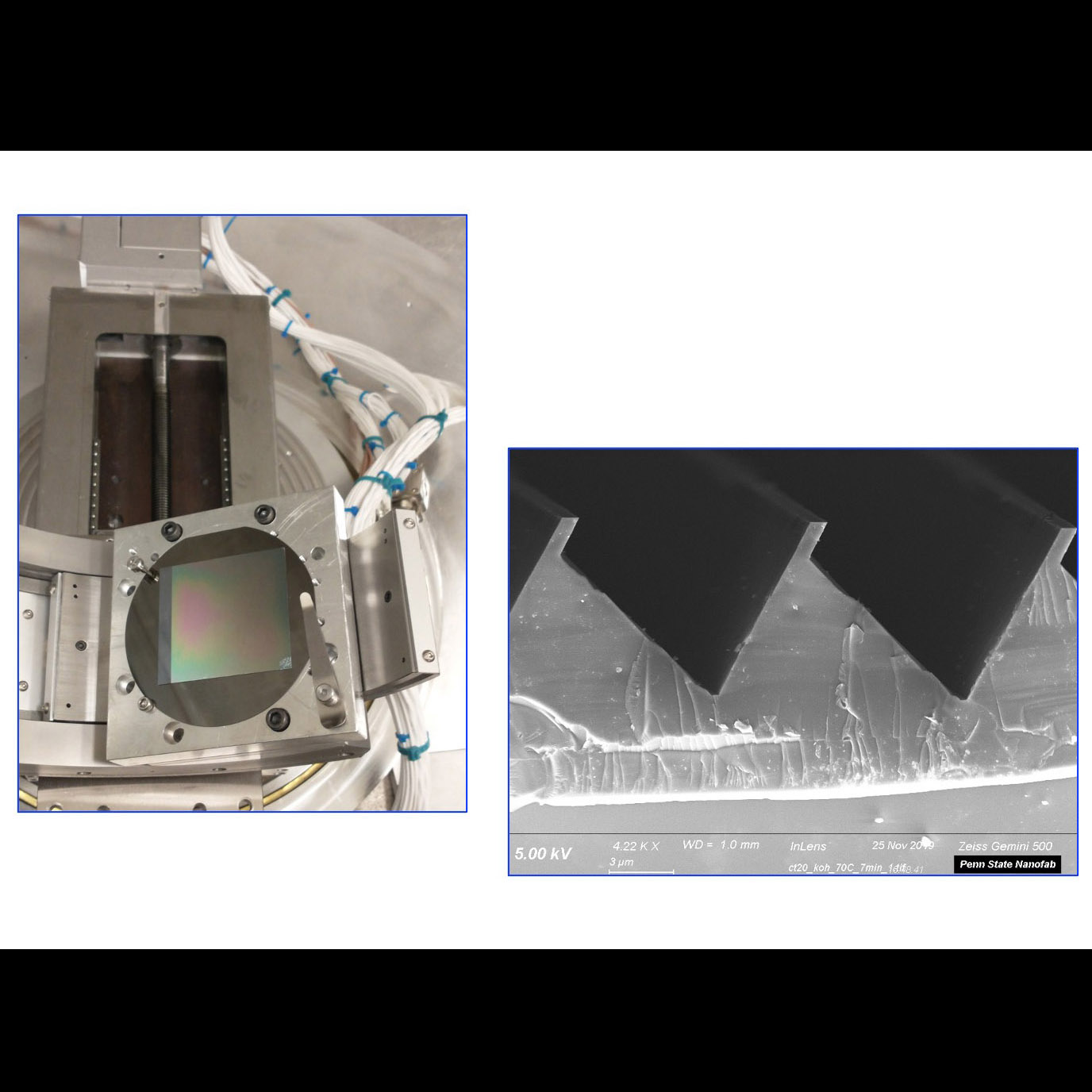
Protoflight CHESS echelle grating and Scanning Electron Microscope (SEM) image of ruled grating
Significance: May enable future UV/optical spectroscopic missions; enables current UV suborbital missions
Project Title: Electron-Beam-Lithography Ruled Gratings for Future UV/Optical Missions: High Efficiency and Low Scatter in the Vacuum UV
PI: Brian Fleming (U. of Colorado)

Mock array in vibration test
Significance: May enable future Cosmic Microwave Background (CMB) missions, e.g. LiteBIRD
Project Title: Technology Development for LiteBIRD and other CMB Missions
PI: Adrian T. Lee (UC Berkeley)
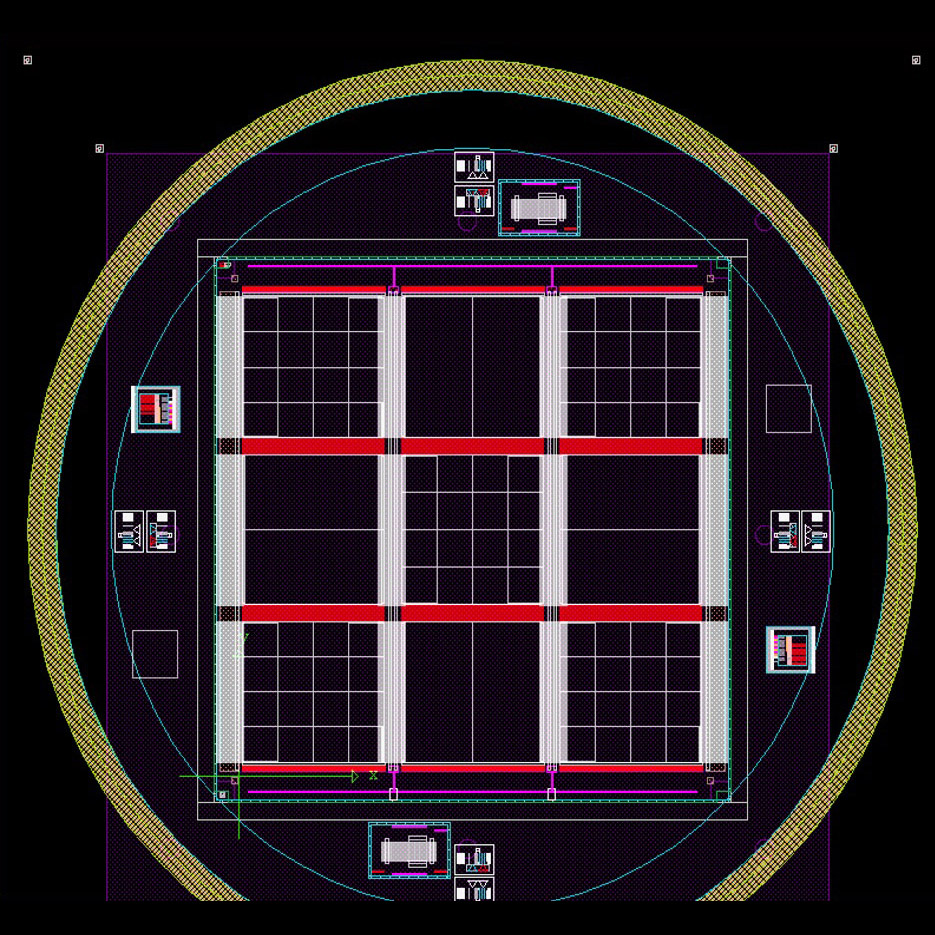
Mask layout for 734×348 microshutter array; small sections in sub-arrays consist of microshutters with various keystone structures
Significance: May enable sparse-field multi-object spectroscopy for e.g. LUVOIR, HabEx, CETUS, and/or AERIE
Project Title: Scalable Microshutter Systems for UV, Visible, and IR Spectroscopy
PI: Matt Greenhouse (GSFC)

Planacon 50-mm sealed tube with sapphire input window, bialkali cathode, Atomic Layer Deposition (ALD) borosilicate Multi-Channel Plates (MCPs), and Low-Temperature Co-fired Ceramic (LTCC) XS anode
Significance: : Baselined by HabEx, LUVOIR, and CETUS for UV/Visible light detection
Project Title: High-Performance Sealed-Tube Cross-Strip (XS) Photon-Counting Sensors for UV-Vis Astrophysics Instruments
PI: Oswald Siegmund (UC Berkeley)
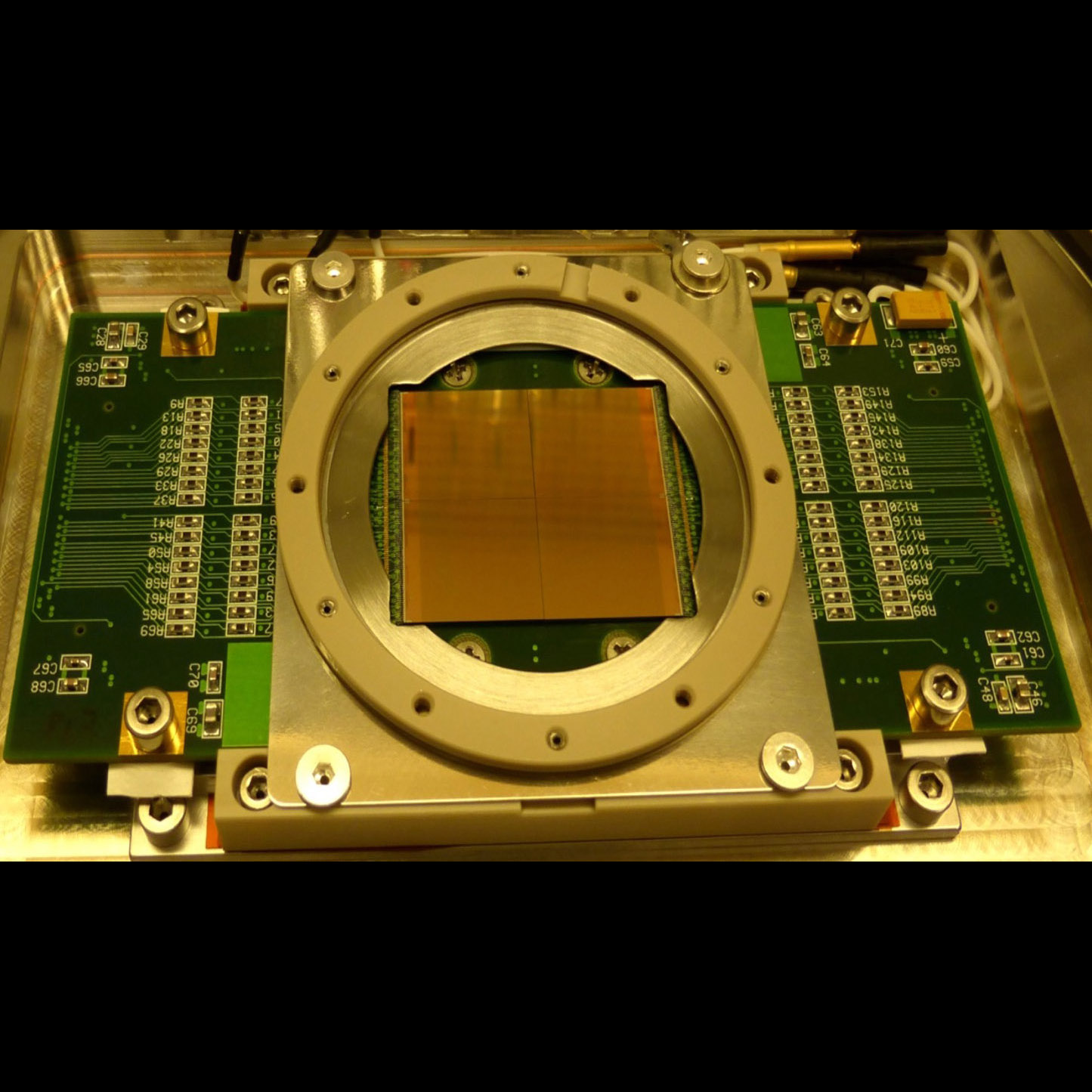
Multi-Channel Plate (MCP) detector with 2×2 array of Timepix readout chips in the center
Significance: Four-side-buttable low-power readout chips may enable future far-UV missions with large focal planes
Project Title: : Large-Format, High-Dynamic-Range UV detector using MCPs and Timepix4 readouts
PI: John Vallerga (UC Berkeley)
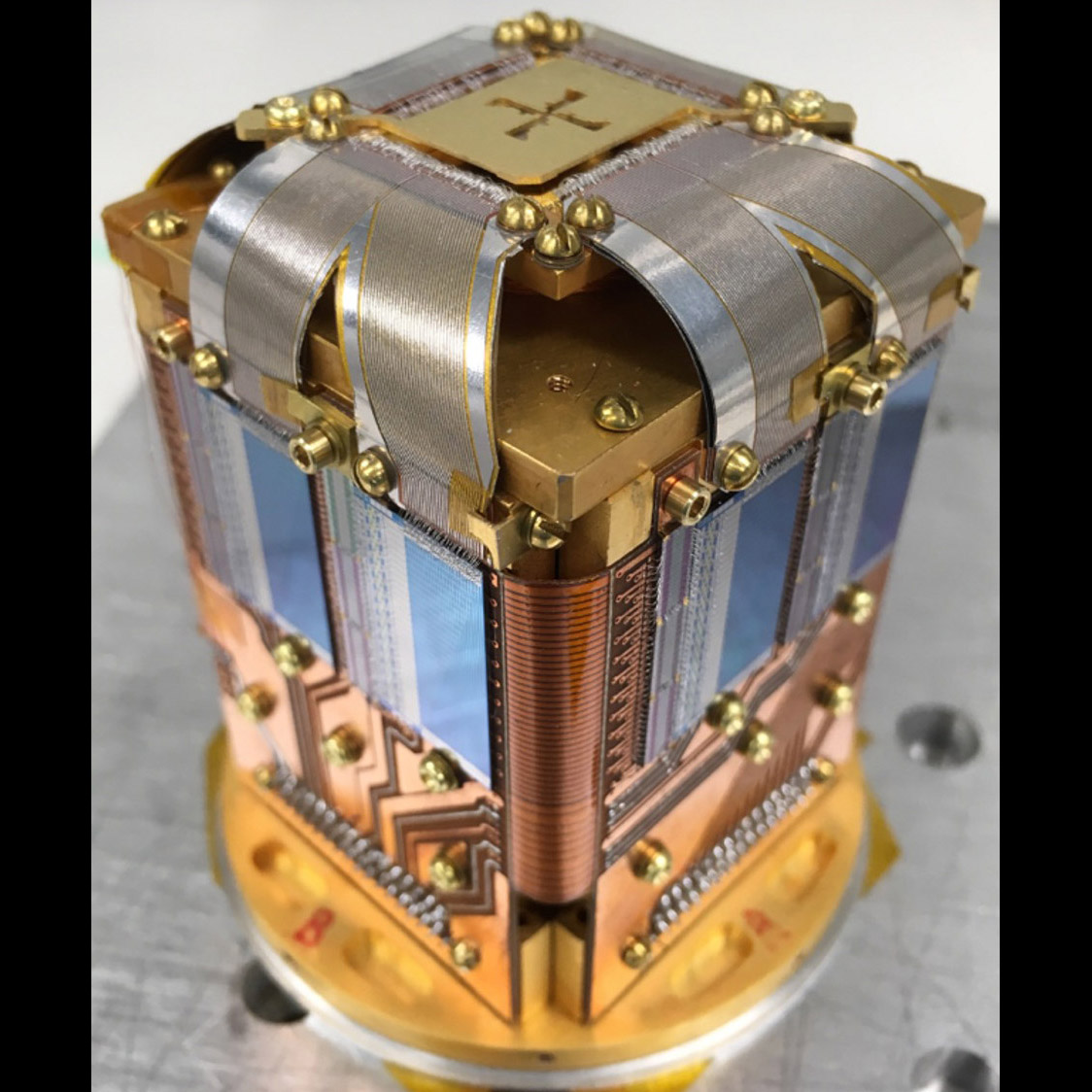
NIST-developed 8-column × 32-row TDM "snout" package of detectors with readouts
Significance: Supports NASA X-ray observatories by developing similar instruments in ground-based labs, replicating conditions in astrophysical sources observed by spaceflight instruments, and observing them parametrically to help interpret space-based data
Project Title: : Advanced X-ray Microcalorimeters: Lab Spectroscopy for Space Atomic Physics
PI: F. Scott Porter (GSFC)

2D Delta-Doped Electron-Multiplying Charge-Coupled Device (EMCCD) detector
Significance: Ultra-low-noise detectors were baselined by SHIELDS, HabEx, LUVOIR, and ground facilities
Project Title: Advanced FUV/UV/Visible Photon-Counting and Ultralow-Noise Detectors
PI: Shouleh Nikzad (JPL/Caltech)












































